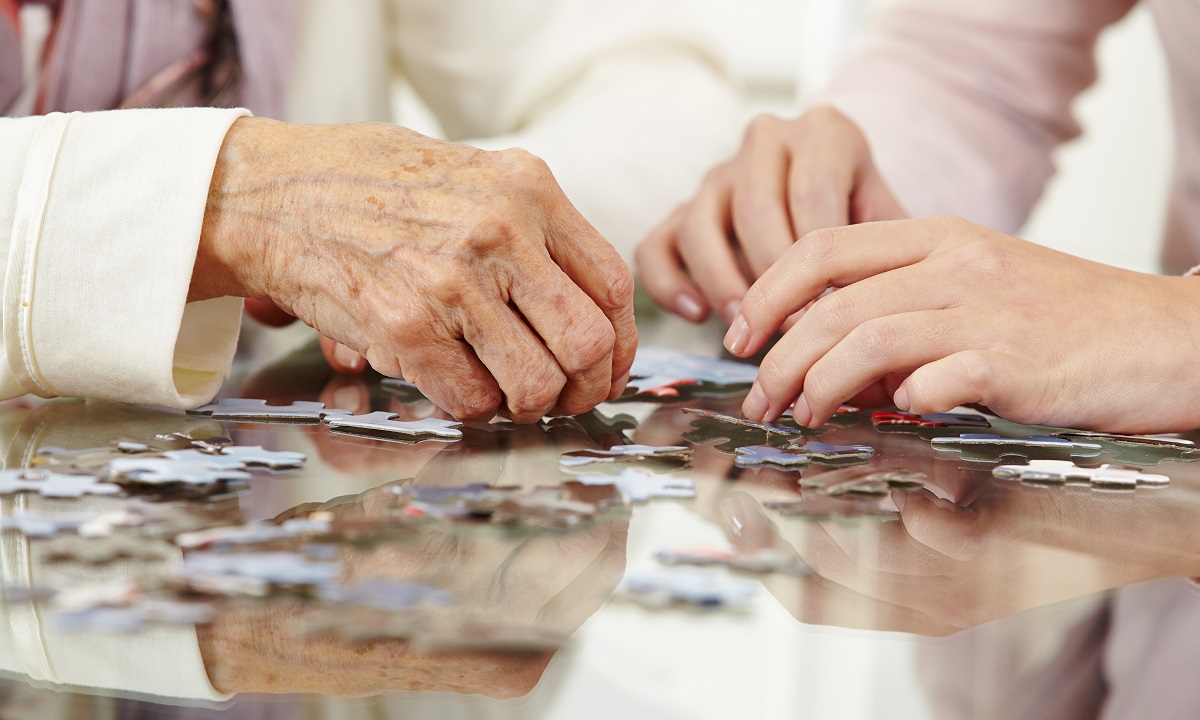Interacting with art and visiting galleries can be an extremely beneficial activity for people with dementia and memory loss. We look into how and why this is…
In recent years, there’s been increasing recognition of the power of art for boosting the wellbeing, happiness and engagement of people with dementia.
In 2006, The Museum of Modern Art (MoMA) in New York set up a programme that was specifically geared towards people with dementia. It was designed to help them engage with the artworks through the development of training resources for arts and health professionals on how to make art accessible to people with dementia.
These days, the gallery’s dementia programme – known as Meet Me – is extensive and includes guidance for other museums and galleries on how to set up dementia-friendly programmes.
Tapping into imagination
After success in New York, more galleries began following suit. The Art Gallery of New South Wales in Australia ran a pilot programme inviting people with dementia to view iconic Australian artwork in their gallery collection. People working on the dementia programme were given training by Alzheimer’s Australia to complement their knowledge on the different artworks.
Researchers found art allowed people to tap into their imagination.
Heather Whitely-Robertson, Head of learning and participation at the Art Gallery of New South Wales, said:
‘What was really striking was the observed significance of what we would call in the moment pleasure that participants were able to demonstrate in their program.
‘What we really noticed were behaviours like laughter and smiling, leaning forward to listen, sharing of personal meaning, sometimes reminiscence, but not always, very much an experience about in the present or in the moment joy.’
In fact, this “in the moment” experience actually spared people with dementia the stress and frustration of trying to remember memories.
Margret Meagher, executive director for Australian Centre for Arts and Health agrees that art brings enhancement to the lives of those with dementia:
‘You can see the pleasure on people’s faces, you can see the joy of interacting with other people, because quite often when people live with dementia they become reclusive, and this is a great way to bring people out of themselves and give them a sense of value, a sense of appreciation.’
Dementia and becoming an art critique
In Canada, it’s gone one step further. The artist and art professor Landon Mackenzie, nursing professor Alison Phinney and Michael Wilson from Fraser Health Authority (a care provider) worked together to look at how art could help those with dementia.
They discovered that when art was displayed in care homes, it acted not only as a vehicle for hope and a catalyst for engagement, it also encouraged residents to offer their own critiques.
Mackenzie enlisted 18 students from Audain School of Visual Arts to create suitable paintings for Fraser Health care homes. The research team discovered that the paintings triggered memories and engagement between the person with dementia and the artwork. They also encouraged staff to have more meaningful conversations with residents beyond the ‘time-for-your-medicine’ type exchanges.
‘It gave them a chance to get to know the residents better,’ said Dr. Phinney, who led the study. ‘The paintings invited stories. And even when [the stories were] fragmented and hard to understand, we did better understand this person [who has] a history and desires and feelings of sorrow and feelings of joy that we all might relate to.’
For example, a painting of a horse triggered memories for one resident of riding horses as a child. ‘I’ve been riding horseback since I was two years old,’ said the resident. She then launched into a story about riding bareback into the fields to bring sandwiches and coffee out to the men working there.
Moreover, the art invited certain critiques and not everyone was complimentary. One resident pronounced a painting of sheep in the grass as ‘childish’. Ouch…
Did you know?
Research carried out by Suffolk Artlink, a rural arts group working with those living with dementia shows that for every £1 spent by care homes on arts work, there is a return of £3. Examples of savings include a care home resident who slept so much better after being exposed to creative arts that she started pressing her buzzer three times a night instead of 20, saving staff time. “[The research] isn’t a magic key to unlock money, but it gives a business case to persuade the care sector to buy into it,” says Suffolk Artlink co-director Alex Casey.
Where can YOU go?
So if you’re keen to encourage a loved one to enjoy art and galleries, where can you go?
Many galleries in the UK are in the process, or have already taken steps towards giving their staff dementia training. The following galleries have either considered access for those who are elderly or have mental impairments or can offer art programmes for people with dementia:
Manchester Art Gallery
The National Gallery, London
TATE Galleries, across UK
National Gallery, Scotland
Walker Art Gallery, Liverpool
However, it’s still a good idea to ring up the gallery beforehand to find out what they can offer and how the gallery is set up for those with dementia.
Take a look at the website Arts4Dementia.org.uk for more information on different arts events across the country.
Bringing art back into the home
If getting out to a gallery is proving tricky, you can still bring it into the home as a means of boosting engagement and conversation.
Try printing off images of famous artworks and putting them up for people to look at and discuss.
Encourage friends, loved ones or residents to appreciate or create their own artwork – the following products could be helpful in this.
Millie Marotta Animal Kingdom Colouring Book, £9.99
A detailed colouring book that will encourage creativity.
Aquapaint Painting with Water – Everyday, £12.49
When these clever sheets are painted with water, a picture starts to appear.
In the Garden in Pictures, £20
The beautiful images in this picture book encourage conversation and reminiscence.
Active Minds Painting Book, £9.99
Providing 40 clear, non-child-like images that are ideal for painting.
Retro Colouring Pack of 12 – A3, £7.49
Trigger memories and enjoy colouring with these striking images. Their large size makes them ideal for displaying.
SHARE
Explore more




